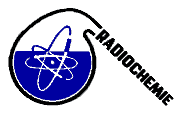Speaker
Dr
Andrzej Grosicki
(National Veterinary Research Institute, Department of Radiobiology, Pulawy, Poland)
Description
An increased level of caesium radioisotopes was noted in many foodstuffs after the Chernobyl disaster. The radiocaesium activity concentrations may remain high in products such as game meat, wild mushrooms, and forest berries. Therefore, an official monitoring of radiocaesium in game meat was established by Polish Veterinary Inspection. Generally, consumption of game meat in Poland is low. However, in hunters’ families this sort of food can contribute a large portion of meat to a diet. Moreover, some quantities of Polish game meat are exported to many countries. Meat samples of wild boar, red deer, and roe deer were taken at game processing facilities by veterinary inspection officers and then transported to laboratories for analyses. Radiocaesium activity concentrations were determined by gamma-ray spectrometry using scintillation (NaI(Tl)) detectors. The Cs-134 activity concentrations were negligible (below MDA) in all the samples analysed. Generally, the Cs-137 activity concentrations varied between and among the animal species even in the same region ranged from MDA values to some hundreds Bq/kg. The effective dose, which general population in Poland received from consuming game meat, may be considered very low with the exception of hunters’ families. Assuming the mean annual game consumption of 20 kg in hunters’ families and the mean effective dose of 0.23 µSv per kg (two year studies), an individual in the most exposed group may receive the effective dose of 4.6 µSv. In conclusion, consumption of local game meat is safe in terms of contamination with radiocaesium and radiological protection.
Primary author
Dr
Andrzej Grosicki
(National Veterinary Research Institute, Department of Radiobiology, Pulawy, Poland)

